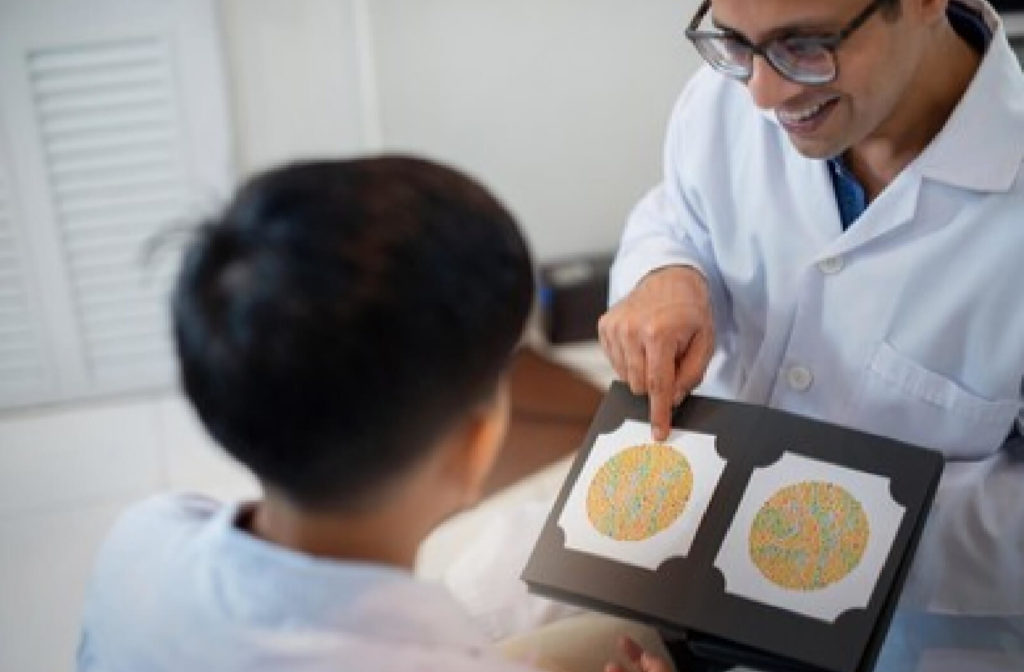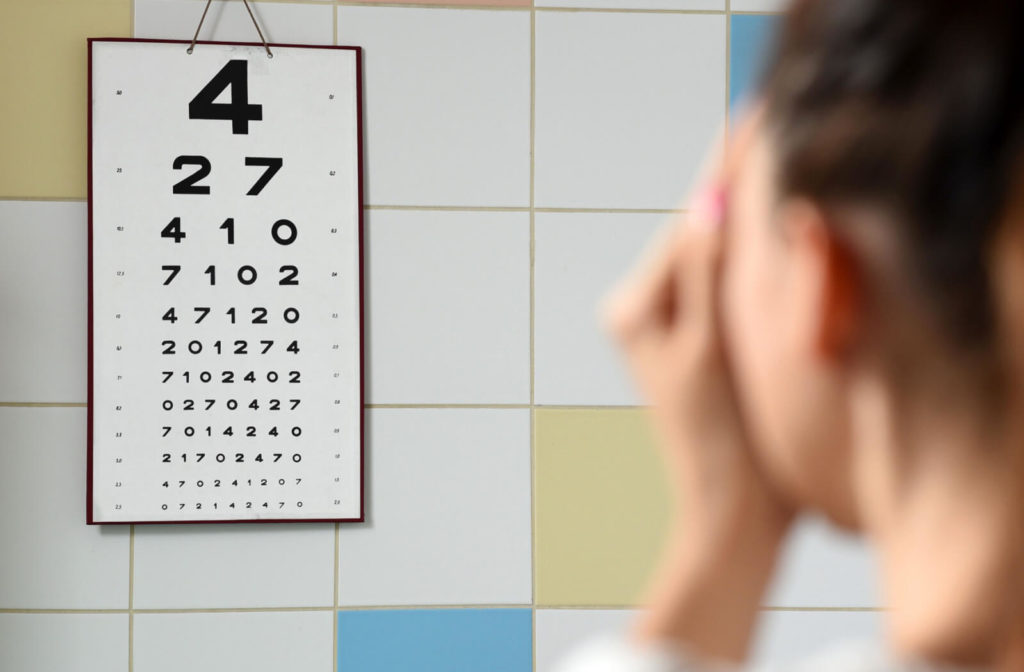Eye care is a crucial piece of your overall health. Regular eye exams monitor your vision changes, and your optometrist can assess the eye’s structures or identify symptoms you may not realize are significant.
An eye exam can help uncover eye diseases and other concerns before they develop into advanced stages to preserve your vision from childhood into late adulthood.
What to Bring to an Eye Exam
Preparing for your eye exam can help you make the most of your time with your optometrist. When booking your appointment, you should mention any eye problems you have, such as dry eyes or digital eye strain. You are welcome to bring along notes or any questions you’d like your eye doctor to answer.
Other things you should bring with you to your eye exam are:
- A list of medications you’re taking
- Current glasses and contact lenses
- Sunglasses, if your optometrist plans to dilate your pupils during the exam
What Happens During an Eye Exam?
During a thorough eye exam, your optometrist will perform a course of non-invasive tests to assess the complete eye structures and field of vision.
Visual Acuity
A visual acuity test evaluates how well you can see from a distance. Your optometrist will use a Snellen chart of letters to help determine your vision’s clarity.
During the test, you’ll sit 14–20 feet away and read the smallest letters you can see clearly. Then you’ll repeat to test each eye separately. Your optometrist may request you complete this several times with different combinations of lenses to determine your new prescription.
Refraction Assessment
When you have a refractive error, light waves bend as they pass through the cornea and the lens but can’t focus the light on the retina, causing blurry vision. The most common types of refractive errors include:
- Myopia (nearsightedness)
- Hyperopia (farsightedness)
- Astigmatism
- Presbyopia
Uncorrected blurry vision can cause eye strain, headaches, or squinting. Refractive error tests can help your optometrist fine-tune your prescription to sharpen your vision.

Color Vision Test
In this simple test, your optometrist will show you a circle with colored dots. Within the circle, dots in a contrasting color make a shape, such as a letter or a number. If it’s easy to distinguish the shape, your color vision is likely good. You may have color vision deficiency if you struggle to see the symbol or the dots all blur together.
If a person has color vision problems, they are typically present at birth, and people struggle to distinguish reds and greens. If color vision is impacted by a disease or injury, people may have difficulty differentiating blues and yellows.
Slit-Lamp Exam
To magnify and light up the front of the eye, optometrists use a slit lamp to examine your cornea, iris, the fluid chamber between them, the lens, lashes, and eyelids.
A slit lamp exam can help identify signs of:
- Macular degeneration
- Detached retina
- Cataracts
- Corneal injuries
- Obstructions or blockages in the blood vessels in the eye
Retinal Exam
During a retinal exam, your optometrist evaluates the structures deep in the back of the eye. The assessment offers a clear view of the retina, macula, optic nerve, and blood vessels at the back of the eye. They’ll likely dilate your pupils with eye drops so your pupils don’t reflexively close from the light.
A retinal exam allows optometrists to detect eye health problems, such as:
- Macular degeneration
- Problems related to diabetes
- Abnormal blood vessel development
- Glaucoma
What Does an Eye Exam Evaluate?
Eye exams can help identify refractive errors and vision changes, but they can also detect issues deep in the eyes, such as:
- Muscle problems around the eye resulting in crossed eyes or lazy eye
- Tumors and cancers like intraocular melanoma
Optometrists can also check for conditions considered unrelated to the eyes, including:
- Autoimmune disorders, such as multiple sclerosis
- Diabetes
- High blood pressure or cholesterol
Are Children’s Eye Exams Different from Adult Eye Exams?
Your children should get their first eye exam earlier than you may think. Before their first birthday, infants should visit the optometrist to examine the ocular structures and ensure your children’s eyes are appropriately developing.
In preschool, their eye exam will focus on overall eye health, eye focus, binocular vision, and tracking movements. Signs of lazy eye (amblyopia) and crossed eyes (strabismus) become evident at this growth stage requiring early intervention and vision therapy.
School-age children benefit from yearly eye exams to monitor the changes in their vision. Clear vision in childhood can help your child succeed in the classroom and in their favorite activities.
Schedule Your Next Eye Exam
Keep your eye health on track. Book your next eye exam with Dr. Taylor Bladh, OD to get an updated prescription and have your eye-related questions answered.



